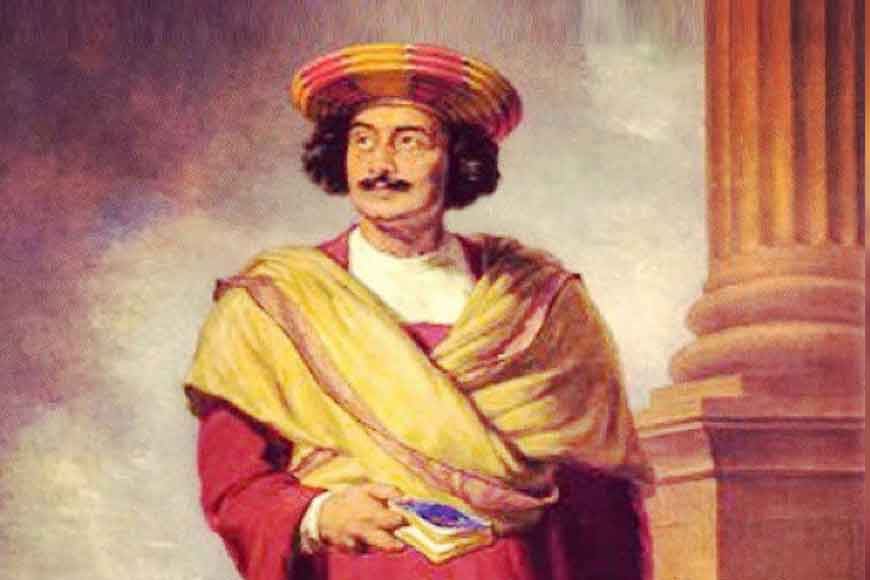Raja Ram Mohan Roy is one of the most popular individuals in India who reformed the Indian culture through his thoughts and movements. He was born on 22nd May in 1772 and was the founder of the Brahmo Sabha, a social-religious reform movement in Indian history. He was given the title of ‘Raja’ by Akbar II due to his great influence in the field of politics, education, religion, and public administration. He is popularly known for his efforts in abolishing the practices of ‘sati ‘and ‘child marriage’ in the country and is considered to be the ‘Father of the Bengal Renaissance’ by many Historians.

Journey of Raja Ram Mohan Roy
In the quiet place of Radha Nagar in the Hooghly district of the Bengal presidency, Raja Ram Mohan Roy was born into a Brahmin family. Since his childhood, he was greatly influenced by his descendants, who were imported from Kannauj in the twelfth century.
In the rich district of West Bengal, he began to fight against the polygamy and dowry system of kulinism. Later on, he went on to become a great scholar of Sanskrit, English, and Persian languages. He was also good in Latin, Greek, and Arabic. His parents had a great influence on his occupation as a Scholar and Public Administrator which he soon walked into.
It is said that the Arabic and Persian studies influenced Raja Ram Mohan Roy into thinking about the One God theory more than the study of the European Gods. His impact on modern Indian history is based on the ethical principles of the Vedanta School of Philosophy.
He had translated several Vedic scriptures into English and co-founded the Calcutta Unitarian Society and the Brahma Samaj. This society played a huge role in his reforming role of the modern Indian society, from where he successfully fought against child marriage and sati. He integrated western culture into his traditions and established several schools to popularize the theory of modernism.
Raja Ram Mohan Roy’s Legacy
Religious Reforms
According to the Religious Reforms by Raja Ram Mohan Roy, here are his beliefs from the Brahmo Samaj, which are as follows –
- The Brahmo Samaj believes in the fundamental doctrines of Brahmanism and treats it as the basis of every religion followed by man.
- Society believes in One Supreme God who is endowed with distinct moral attributes and personality, which equals to his good nature and intelligence befitting of an Author and Preserver of the Universe. We worship only him.
- The society of Brahmo Samaj believes in worshipping him in no fixed time or place as we can adore him at any time and place as we want, provided that these things are composed and directed in mind towards him.
Raja Ram Mohan Roy had read several Vedas, Quran, and Upanishad, as such, his beliefs were derived from a combination of all of these elements Hinduism, Islam Unitarianism, Deism, and the idea of Freemasons.
Social Reforms
- To fight against Hindu customs such as child marriage, sati, polygamy, and the caste system.
- To demand property inheritance rights for the women in the society.
- In 1828, he had set up the Brahmo Sabha, which was a movement of reformist Bengali brahmins to fight against these social evils.
Raja Ram Mohan Roy founded the Atmiya Sabha and Unitarian Community to fight such social evils to propagate the social and educational reforms in the country. He was a man who fought against superstitions and was a Pioneer in Indian education. His political background and Christian influence influenced his religious as well as social views regarding Hindu culture.
Educational Reforms
- As an educationist, Raja Ram Mohan Roy believed education should be implemented for all social reforms.
- In 1817, he collaborated with David Hare to set up the Hindu College at Calcutta.
- In 1822, he founded the Anglo Hindu School, followed by the Vedanta College after 4 years. He insisted that his method of teachings and doctrines be incorporated along with the western and modern curriculum.
- In 1830, he helped Rev. Alexander Duff establish the General Assembly’s Institution, which is now known as the Scottish Church College and provided him with the venue vacated by the Brahmo Sabha to get his first batch of students.
- He went on to support the induction of Western learning into the Indian education system.
- He set up the Vedanta College, in which he offered courses of subjects with the synthesis of both Western and Indian learning.
- One of his most popular journals is the Sambad Kaumudi, in which he covered topics such as freedom of the press, separation of the executive and judiciary system, and the induction of Indians into high ranks of services.
- Around the time when the English company had shut down the Press, Raja Ram Mohan Roy composed two memorials against the act in the year 1829 and 1830, respectively.
Conclusion
Raja Ram Mohan Roy’s commitment to his educational reforms sparked various debates between great personalities such as Mahatma Gandhi and Rabindranath Tagore where Mahatma Gandhi objected to his devotion to English education while Rabindranath Tagore rejected the same idea by saying how he had been highly influenced by the western culture from his childhood which is why he was a friend to the west. This issue was later solved by several trials and discussions through which they came up with a unanimous decision which we see in today’s educational reform. Raja Ram Mohan Roy’s life had been a great influence on the present Indian culture, which is why it makes for a great topic on how much society has changed due to his influence.

